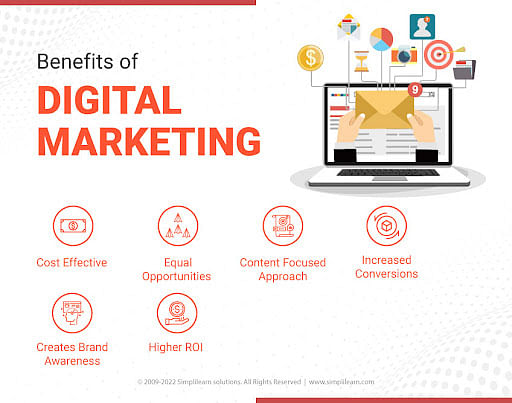Enhance User Experience and Drive Traffic With Responsive Web Design
In today's electronic landscape, where individuals are accessing websites from a plethora of tools, receptive internet style has become more vital than ever. With its ability to adapt and seamlessly readjust to different display sizes, responsive layout not only boosts individual experience yet also drives website traffic to your site.
Why Receptive Web Layout Matters
Responsive website design is a necessary aspect of modern-day internet advancement as a result of its ability to make sure optimal individual experience throughout various gadgets and display dimensions. With the proliferation of mobile phones, tablet computers, and other smart phones, it has actually become vital for websites to adapt and supply smooth functionality regardless of the tool being made use of.
The primary reason receptive website design matters is that it allows individuals to have a regular and enjoyable searching experience, despite the tool they are using. A responsive site immediately readjusts its layout, design, and content components to fit the display dimension and resolution of the gadget, making certain that customers can conveniently interact and browse with the internet site with no inconvenience or aggravation.
Furthermore, responsive website design additionally plays a substantial duty in seo (SEO) Browse engines, such as Google, prioritize sites that are mobile-friendly and responsive in their search results page. By including receptive style principles, websites can boost their presence and ranking, resulting in increased natural website traffic and prospective customers.

Boosting Customer Engagement Through Responsive Style
Enhancing customer involvement is a key goal of responsive design, as it makes sure that individuals can conveniently accessibility and connect with website content on any device. With the boosting use mobile phones and tablet computers, it is critical for websites to adjust to various display dimensions and resolutions. Receptive layout makes it possible for internet sites to immediately change their design and content to offer a seamless user experience throughout tools.
Among the primary methods responsive design boosts customer involvement is by lowering tons times. With a responsive site, users don't need to await different mobile versions to load, causing much faster access to content. This improved rate causes higher user satisfaction and urges them to invest more time on the website.
In addition, responsive design boosts individual engagement by boosting navigating and user interface (digital marketing Carlsbad). When a web site is developed responsively, switches and menus are optimized for touch communications, making it simpler for customers to interact and navigate with the website on their mobile phones. This user-friendly and intuitive experience maintains individuals involved and encourages them to discover more of the web site
In addition, responsive layout permits far better content exposure and readability. By adjusting the design and typeface sizes to different tools, responsive web sites ensure that individuals can conveniently understand the material and review. This improves individual involvement by reducing the requirement for scrolling or zooming to review the text.
Boosting Internet Site Traffic With Responsive Website Design
With the growing popularity of smart phones, having a web site that is receptive to various display dimensions and resolutions is crucial for driving raised website traffic. In today's electronic landscape, customers are accessing internet sites from a selection of tools such as smart devices, tablet computers, and computer. Each of these devices has different display dimensions and resolutions, and if your web site is not created to adapt to these variations, it can result in a poor user experience and a loss why not find out more of potential web traffic.
Responsive website design makes certain that your internet site looks and works efficiently across all tools. By utilizing versatile grids, fluid pictures, and media inquiries, responsive layout enables your site to automatically readjust its design, navigating, and material to fit any type of display dimension. This indicates that individuals will have a smooth surfing experience no matter of whether they are using a tiny mobile phone or a large desktop computer computer system.
Secret Elements of Efficient Responsive Style
Reliable responsive layout incorporates numerous essential components that guarantee a smooth user experience across various devices. One of these components is flexible grids and designs. By using family member devices like percentages as opposed to dealt with units like pixels, developers can develop layouts that scale and adjust to fit various screen sizes. This permits web content to be displayed in a legible and visually appealing way on any kind of device.
Another important component is media inquiries. These enable designers to use different designs and designs based upon the features of the customer's tool, such as display dimension and alignment. By making use of media questions, developers can maximize the discussion of web content for each and every tool, making certain that it is conveniently obtainable and legible.
Responsive images are also important in efficient responsive design. Photos that are also big can reduce page tons times on smart phones, while images that are also small might appear pixelated on larger displays. By using techniques such as receptive picture resizing and lazy loading, designers can ensure that photos are properly sized and enhanced for each tool.
Last but not least, efficient responsive layout includes a mobile-first method. This means making and focusing on material for smart phones initially, and after that expanding and boosting the style for bigger displays. This approach makes certain that the most important material is easily obtainable on smaller displays, while still offering an abundant experience on larger tools.
Best Practices for Applying Responsive Website Design
Applying responsive internet design needs careful consideration of numerous finest techniques to guarantee an optimum user experience throughout various devices. When implementing responsive internet design., right here are some vital best methods to adhere to.
Firstly, it is essential to focus on mobile individuals. With the increasing supremacy of smart phones, designing for mobile-first has ended up being crucial. Start by creating for smaller sized displays and afterwards progressively improve the design for bigger displays.

Another vital finest technique is to enhance photos for different display resolutions. Large pictures can reduce the packing time of your internet site, particularly on mobile phones with slower connections. Usage responsive pictures that can be resized based upon the device's display resolution to read here boost performance.
Furthermore, examination your site on various tools and screen sizes to make certain a smooth and consistent experience. There are different screening devices available that can assist you recognize any kind of issues and make necessary modifications.
Last but not least, focus on usability and availability. Make certain that your site is simple to browse, with clear and succinct content. See to it that your web site is obtainable to individuals with disabilities and complies with availability standards.
Verdict
To conclude, responsive website design plays a crucial role in enhancing user experience and driving web traffic to sites. By embracing receptive style concepts, web sites can make sure optimum watching experiences throughout various gadgets, causing boosted customer involvement (Web Design). Moreover, receptive layout can additionally add to higher internet site web traffic as it enhances online search engine rankings and read the article helps with easy sharing of web content. Organizations must focus on applying the crucial elements and best methods of responsive layout to efficiently meet the needs of modern-day users.
Maximizing user interaction is a vital goal of receptive layout, as it guarantees that customers can easily gain access to and connect with website material on any kind of device. Responsive style makes it possible for websites to immediately readjust their layout and material to give a seamless individual experience throughout devices.
Furthermore, receptive design improves customer engagement by boosting navigation and individual interface.Receptive images are additionally important in reliable receptive design. By taking on responsive style concepts, sites can make certain optimal checking out experiences throughout various devices, leading to enhanced individual interaction.